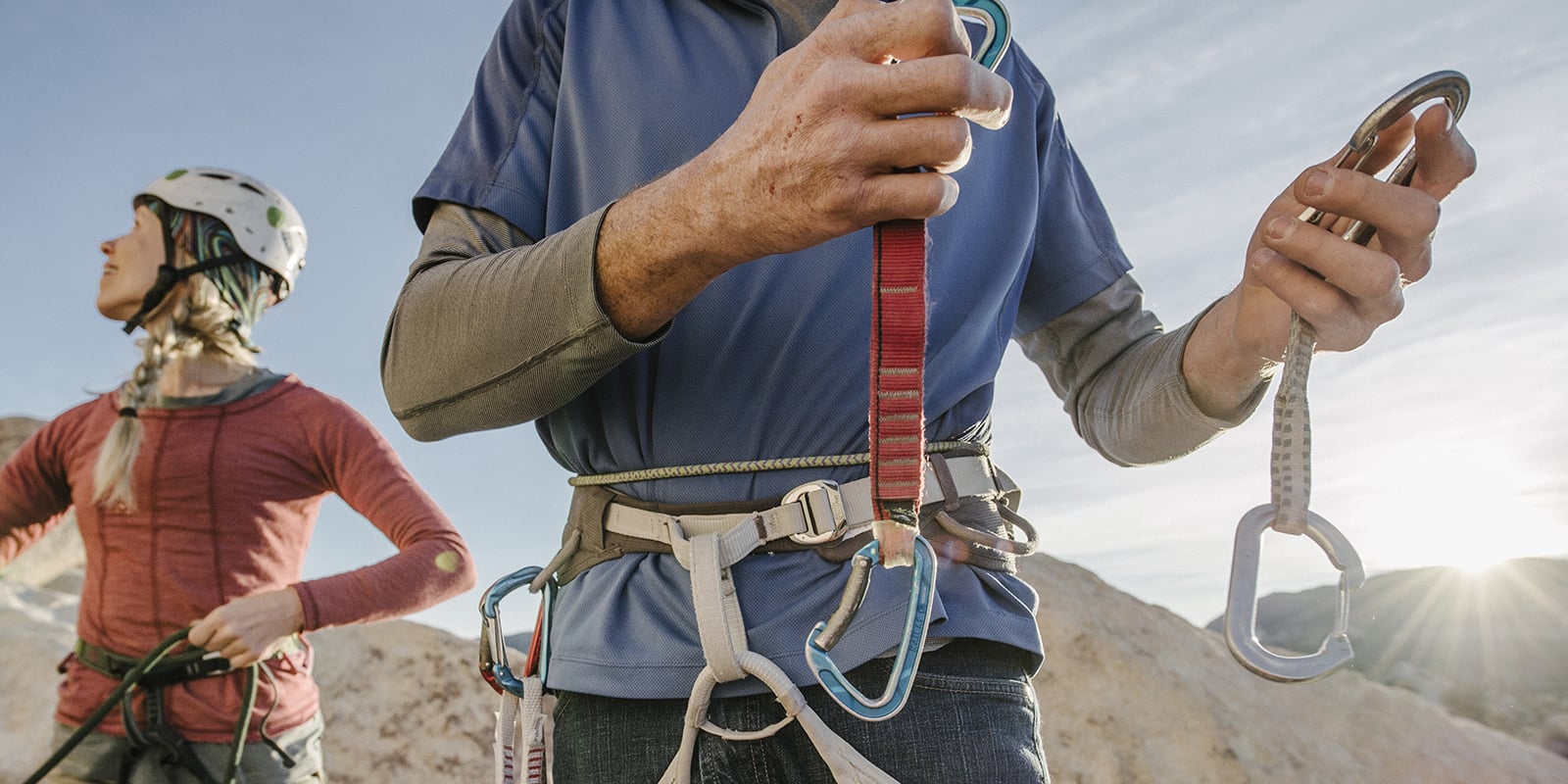Having the ability to proceed through these measures quickly and economically not just conserves your energy but also enhances security by restricting the total amount of time that you are faced by taking a fall from over your final stage of security.
Clipping a Quickdraw into a Bolt Hanger
Adding a quickdraw into a slice of protection is easy: Open the carabiner gate with your thumb and forefinger (or just press on the gate from the bolt) and clip it into the bolt hanger. As you do so There Are Many things to think about:
Before cutting a bolt, then try to discover a stable position and a safe grip for your non-clipping hand.
The bolt which you are likely to clip is somewhere between your waist and head so as to introduce the smallest amount of slack into the system. In case you need to climb over the bolt or create a lengthy reach to clip it, then there’ll be slack and so possible for a more fall.
Management of Travel
It is important to look closely at the direction the climbing path travels and also to bear this in mind as you’re cutting on your quickdraws to bolts. The gate of this carabiner on the rope-end of this quickdraw should always face away from the path of travel. This permits the rope to journey across the back of the carabiner as opposed to the gate. Should you choose a fall using all the rope travel across the gate, then it’s feasible for the rope to open the gate and unclip.
After clipping, see the way the rope-end carabiner about the quickdraw contacts that the stone. You ought to prevent cutting on a quickdraw so the base carabiner hangs partway within a border. Should you choose a fall, the carabiner will pry from the border and the carabiner could maybe break.
To fix this, take a collection of two different span quickdraws and utilize a more quickdraw which permits the bottom carabiner to hang entirely over the border.
Also consider the way the gate of this carabiner will get in touch with the stone in a fall. Can there be a bulge in the stone that’ll force the gate open during a collapse? It only requires a temporary opening of this gate to substantially weaken a carabiner, so far so the carabiner could break under the force of a collapse. Employing a shorter or longer quickdraw can keep this from occurring.
Getting fast at cutting the rope into your quickdraw can help save a great deal of energy within the span of a scale and keep you well protected from a collapse. There are a number of unique methods for cutting the rope; under we show two hot manners. The key to clipping the rope is to locate a few ways which work for you and exercise them until the motion becomes organic.
For the sake of this particular lesson, envision the rope-end carabiner gate is facing to the right and you are using your right hand at the initial technique along with your left hand at the next technique.
Beginning from the tie-in knot in your own harness, slide your hands down the rope to catch a length of rope.
As you bring up the rope into the quickdraw, allow it to run on your pointer finger.
Use your palms on the back of this rope-end carabiner to stabilize the carabiner.
Push the rope along with your pointer finger and through the gate of this carabiner to clip the rope.
When you bring up the rope into the quickdraw, catch the rope between your thumb and forefinger.
Whether you apply the snap or pinch technique mainly depends upon the way the rope-end carabiner is confronting and which hand you’re clipping with.
Back clipping: If you clip the rope to the rope-end carabiner onto a quickdraw, pay special attention to the route the rope travels throughout the carabiner. The rope has to pass through the carabiner in the cliff side to the exterior.
A dangerous mistake which is too frequent among newcomer climbers would be to clip the rope so it travels from the exterior to the cliff. This can be known as back clipping. At a fall, the rope could create the carabiner gate to start and unclip in the carabiner.
Z-clipping: Closely spaced bolts generally calm the nerves of direct climbers, but they could on occasion result in what is called Z-clipping. Z-clipping takes place when you accidently catch rope from under the preceding quickdraw as opposed to from over it. It is likely that if you do so you will detect the mistake quickly since the rope drag made by Z-clipping will keep you from moving very much better. But if you’re in a position to keep on climbing, you will have produced a scenario that sets you to get a longer-than-necessary fall. The piece which you trimmed isn’t the one that will catch your fall, but instead the one beneath it will.

